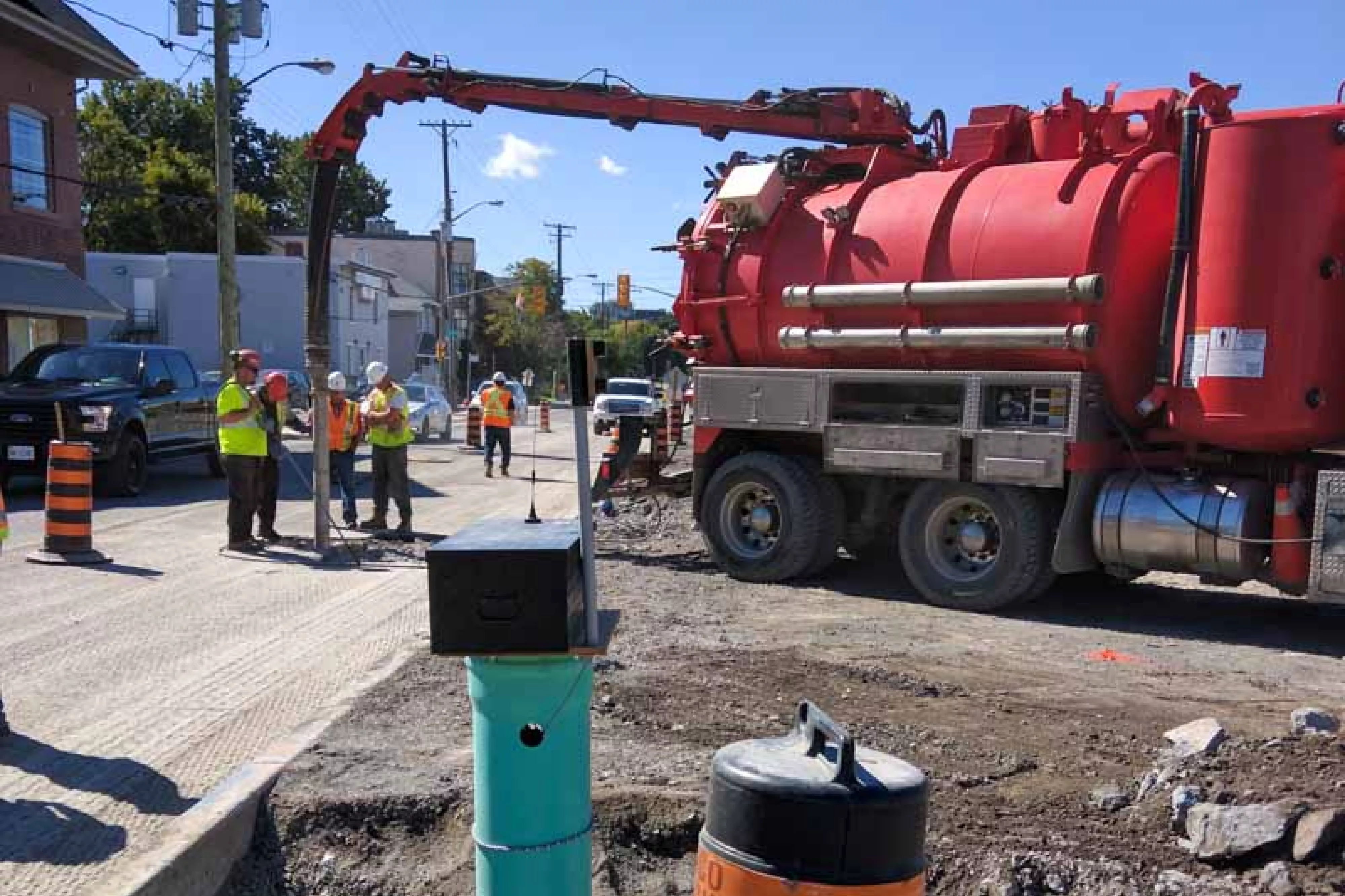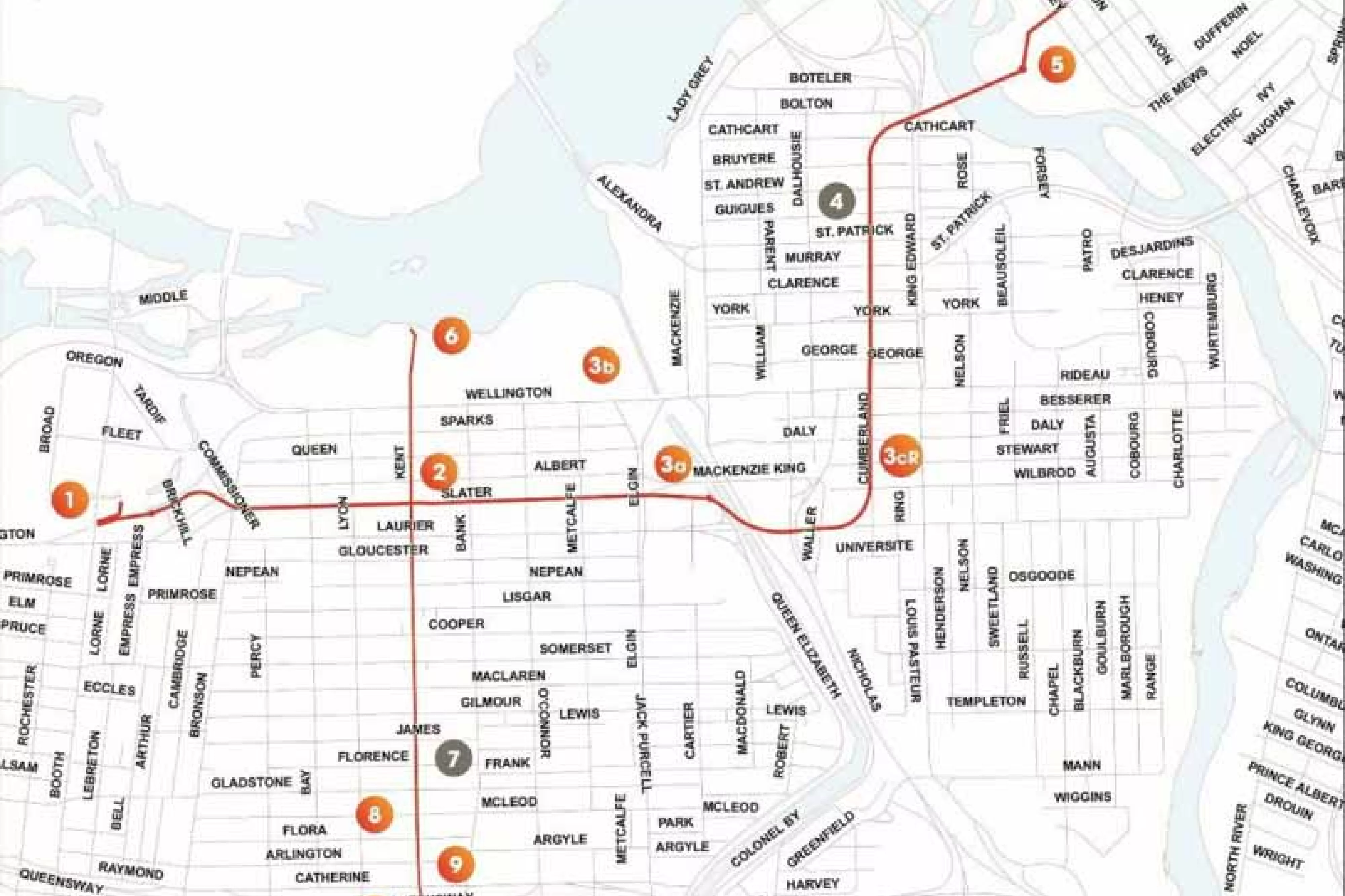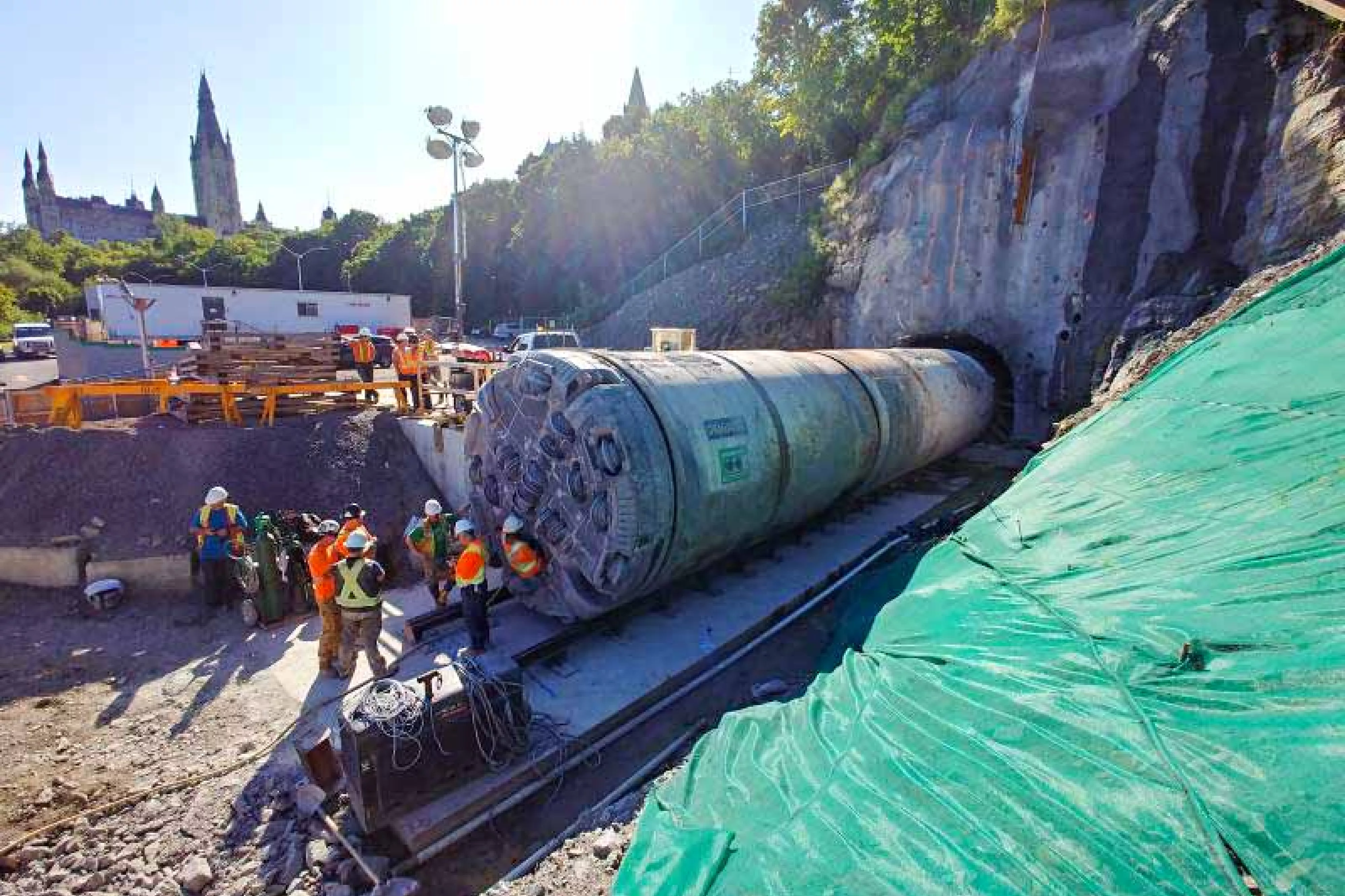Sewage Tunnel Excavation Protection
Combined Sewage Storage Tunnel, Ottawa, Canada – Preserving Our Natural Resources
Background
As the City of Ottawa’s population nears the 1 million mark, local infrastructure has required a considerable upgrade. Ottawa’s downtown has a historical combined sewer system using the same pipes to transport both sanitary and surface water to treatment facilities. During heavy rains or snowmelts, this system can become overwhelmed, resulting in raw sewage bypassing water treatment facilities and flowing straight into the Ottawa River.


Challenge
An environmentally friendly solution was needed that would protect the Ottawa river from such overflows.
The design called for excavating two tunnels through the rock using a Tunnel Boring Machine (TBM) that would provide an equivalent storage capacity of 18 olympic sized pools (43,000 m3 or 56,000 yd3) as an overflow buffer. Such a design would require varying tunnel depths depending on the overlying structures anywhere from 10 m (33 ft) to 21 m (69 ft) beneath the surface. Seven large shafts would serve as access points.
The project needed to ensure that the excavation work advancing through the dense downtown core would not generate vibrations potentially damaging to the thousands of adjacent properties.
Accordingly, a comprehensive vibration and noise monitoring program was created to monitor all work for contractual compliance. A network of monitoring equipment advancing in tandem with the TBM required ongoing installation and maintenance. A total of 60 Instantel monitoring units reported vibration data during peak construction with a subset reporting for the entire duration of the operations that lasted from the summer of 2016 until early 2020.
Approach
The tunnel was excavated using a 4 m (13 ft) diameter Tunnel Boring Machine (TBM) along with urban drilling and blasting, mechanical excavation and shoring techniques. Such machinery produces an array of complex vibrations that propagate through the different layers of ground composition.
Property owners filled out pre-construction surveys to record the state of their properties. These surveys were required for all buildings, utilities, structures, water well and facilities within 75 m (246 ft) of the location of a controlled blast.
As such, vibration monitoring was performed on a vast variety of structures: buried utilities, residential structures, commercial structures, historical structures, high-security government facilities, concrete caisson walls, bridge abutments, and fresh concrete.


Results
Measurements were compared to the ISEE standard for sound/noise and vibration and according to project-specific limits dependant on Transient, Continuous and Blasting vibrations.
The following graphs are recordings of registered vibrations during excavation operations. As the tunnel boring was ongoing 24 hours per day, a continuous Histogram bar graph registered all peak velocities for specific intervals, while individual waveforms were recorded for instances where the peak velocities exceded a reference threshold.
A spectral analysis chart (Fast Fourier Transform FFT) separates the complex waveform into its actual frequency components. This important data is often used to assess the damage, as lower frequencies can cause greater damage to structures.
Complaint Handling
A total of over 35,000 monitoring events were recorded throughout the operations.
Many factors contributed to whether an event was triggered, some of the more significant factors but by no means an exhaustive list were:
- Building types (historical buildings, government buildings, medical buildings)
- Building foundations (rubble, concrete, reinforced concrete)
- Excavation techniques ( TBM, blasting, drilling, mechanical excavation, shoring) • Ground composition (solid bedrock, cracked bedrock, soil)
- Distance from operations (Ex. 15 m from a blast vs 75 m from TBM)
These factors contributed to the complexity of the project vibration characteristics. Definitions were created for three vibration trigger levels: Threshold, Response, and Shutdown. Each of these levels varied depending on the section of the tunnel and operation. A notifications platform was set up that initiated automatic notifications by SMS or email to inform on two levels 1. Warning and 2. Exceedance. This helped to organize and prioritize the three vibration levels.
Further to that, monitoring units at different sites were uniquely programmed and combined with the notification platform such that their Trigger, Warning and Exceedance levels could be managed separately to ensure the stakeholders received properly categorized readings in each instance.
Complaints by property owners regarding potential damage to their structures were filed with the city of Ottawa. In every case, the vibration monitoring contractor (Explotech) was able to analyze each of these concerns with the use of Instantel’s vibration monitoring report data to determine whether or not construction could have caused the noted issue(s).
The monitoring data proved to be incredibly helpful and was referenced in the responses to the effected stakeholders in every instance.
Conclusion
This large scale urban project has spanned 4 years, with the North-South portion of tunneling completed in Mid-August 2018 and the remainder of operations set to be completed in 2020. It has generated over 900 interim summary reports and over 35,000 events that were instrumental in advancing the project while protecting the city infrastructure and private properties. Instantel is proud to be recognized as having an entire fleet of 60 monitoring units charged with the task of standing guard in the nation’s capital to preserve and safeguard the city structures.